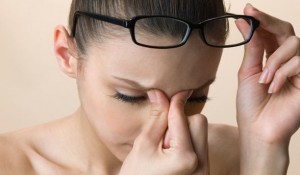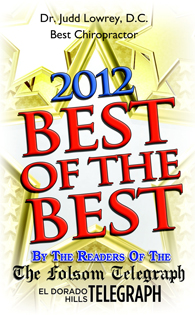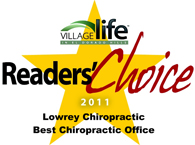Overcoming Office Back Pain
Wednesday, October 24th, 2012
How many hours do you spend sitting at a desk? Is your desk job killing you? OK, it may not be killing you, but have you considered that it may be the cause of your back pain? Work-related back pain is one of the most common occupational disorders in the US, affecting four out of five Americans at some point in their life. Sounds silly, but something as innocent as sitting at your desk all day puts you at a great risk for back pain or injury.
While sitting can damage your back in a variety of ways; the main cause of back pain caused by sitting stems from your back being pulled out of its natural position. Who would have thought that something as standard as a piece of furniture can cause so much anguish for so many? And sometimes, even having the right (ergonomic) chair and perfect posture can’t help alleviate the pain that your desk job has already caused.
Guidelines for medical practitioners state that chiropractic spinal manipulation can help back pain, especially if carried out within the first six weeks of when symptoms appear. The longer you have been in pain, the longer it may take to improve with treatment.
Sitting for long periods of time can also be a contributing factor to sciatic back pain. Sciatica symptoms can include pain, weakness, numbness, or tingling in the leg. Generally, the pain is caused by the compression of one of the five spinal nerves that gives rise to each sciatic nerve. Because of this, chiropractic can be an extremely effective method at treating the symptoms and cause of sciatica. In fact, a recent study showed that among patients with severe sciatica requiring hospitalization, 91% were able to return to work full-time after receiving chiropractic treatment.
Don’t think that work related injuries stop at the chair. Take a closer look at your desk. How about that keyboard you are typing on and that mouse that is attached to your hand 80% of the day? Are you experiencing frequent burning, tingling, or itching numbness in the palm of the hand or your fingers, especially the thumb and the index and middle fingers? Carpal Tunnel Syndrome is very common in today’s workplace, usually caused by overuse and repetitive wrist movements like typing and moving the mouse. What you might not realize is that you can and should see a chiropractor for help!
Typically, the chiropractic treatment for a repetitive stress injury like carpal tunnel syndrome includes manipulation of the affected wrist and elbow, as well as manipulation of the upper spine. A spinal manipulation involves applying controlled pressure to a joint. The chiropractor may also advise the patient to rest the affected arm, apply cold to reduce inflammation, perform appropriate exercises, or wear a splint or brace to immobilize the area.
Additionally, Dr. Judd Lowrey, D.C. at Lowrey Chiropractic is a specialist in soft tissue treatments including Graston Technique and Active Release Technique (ART). ART is a highly successful non-invasive hands-on treatment that restores proper function to soft tissues, in the process eliminating symptoms of pain, numbness, weakness, and decreased range of motion. Active Release Techniques is a proven effective treatment for common injuries due to prolonged sitting, including Sciatica and Carpal Tunnel Syndrome.
The reality is that the office is where most of us spend the majority of their day. Thus, it is important to pay attention to your surroundings. Not only your loud cubical mate, but your chair, mouse, headphones and keyboard can all cause you grief. If you are experiencing pain on a daily basis, make sure to pay a visit to your chiropractor for some relief!
Call Lowrey Chiropractic, El Dorado Hills Chiropractor at (916) 941-7508 today or visit us online at www.lowreychiropractic.com to find out how chiropractic care can help you.
Dr.Judd Lowrey,D.C. | Lowrey Chiropractic | El Dorado Hills & Folsom Chiropractor
(916) 941-7508










